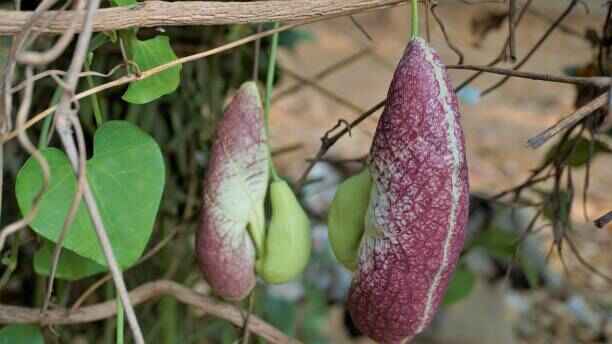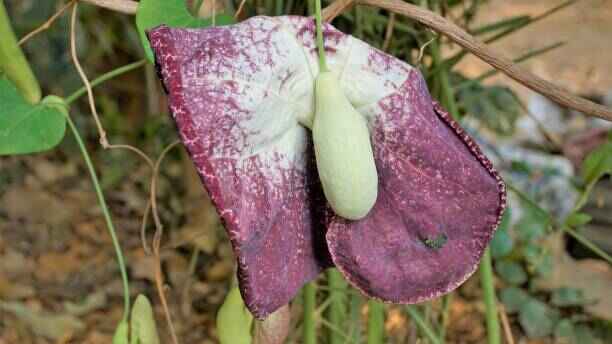Did you ever come across a flower that looks like a duck? Regardless of the fact this superpower of germinating from their seeds always comes as a surprise, the duck flower (Aristolochia grandiflora) plant is a testament to this. This extraordinary and fascinating plant has always attracted different generations of botanists and culture enthusiasts. In this article, information about such spiraea cultivars as the duck flower will be disclosed, including the main features of its appearance, the ways of its planting, and the rules of its planting care.

What is Duck Flower
What about Duck Flower (Aristolochia grandiflora)? It is a creeper that is endemic to Central America and the Caribbean. It has the largest flower cup-shaped blooms, up to a size of about 2 feet, and resembles a duck. The plant is scientifically known as Aristolochia, meaning ‘the best for childbirth’ because of its past practical usage as an abortive.
The duck flower is from the genus of the Aristolochiaceae family, of which there are numerous species with more than 500 identified flowering plants. The Aristolochia grandiflora is one more astonishing plant, distinguished by its remarkable size and the shape of its seeds. Due to this appearance, it has other names such as ‘pelican flower’ or ‘goose flower.’
Unique Characteristics
One cannot discuss what is Duck Flower (Aristolochia grandiflora) without mentioning its extraordinary features:
- Size: The flowers of this plant are among the biggest ever produced in the plant world; they may reach lengths of 30-60 centimeters.
- Shape: The flower has a structure like a waterfowl; its ‘tail’ may be up to 3 feet in length.
- Color: The flower’s interior is usually dark purple or maroon with a smooth and attractive pattern and touch.
- Scent: Nonetheless, the duck flower is very beautiful, but on the other hand, this flower is characterized by a disgusting smell that draws flies and beetles.

How to Grow Duck Flower (Aristolochia grandiflora)
1. Climate:
Check again whether your climate is tropical or subtropical because duck flower flourishes best in locations that are warm and humid.
2. Location:
It is more favored to grow them in regions that experience some daytime shade alongside full sun. The plant thrives in different light environments, but it appreciates some shade while temperatures are high in the middle of the day.
3. Soil preparation:
The duck flower grows best in well-draining, fertile soil. Loosen your garden soil to drain better and add more organic matter to your garden.
4. Planting:
Bury the plant twice deeper than the size of the root ball. Bury the plant up to the neck in the hole in which it was originally growing in its nursery pot.
5. Support:
Since it is a vine, the duck flower requires support to grow on. Your identified plant or tree should be planted near a trellis, fence, or other structure.
Looking after Duck Flower (Aristolochia grandiflora)
To maximize the beauty of your duck flower and encourage the blooms you have been waiting for, ensure your plant is well cared for. Here are some key care tips:
1. Watering:
The soil should be moist often, with rare exceptions of being waterlogged during the growth period of the common plant. Watering the plant methodically when the entire upper layer of soil is dry is advised.
2. Winter care:
In some climate zones, the duck flower dies in winter, so be careful leaving it in parts with low temperatures. It prolongs the growing season, conserves soil moisture, and prevents weed growth; therefore, it should be used to cover the root zone.
3. Pest management:
Check for familiar pests such as aphids and spider mites. Control the infestations early using insecticidal soapy water or neem extract.
4. Pollination:
Another requirement regarding the plant is that if you desire a duck flower to set seeds, it might be necessary to pollinate the flowers by hand because, contrary to the plant’s natural pollinators, it might not be available in parts of the world.
This paper aims at evidencing the ecological role played by duck flowers, and more so on key ecological processes and system features.
It is important to know what a duck flower (Aristolochia grandiflora) is for its beauty and anything beyond that. This plant plays a crucial role in its native ecosystems.
i). Pollinator attraction: The duck flower is an unappreciated food source for numerous insects, despite its unpleasant smell.
ii). Butterfly habitat: Various butterflies, but mostly swallowtails, feed on the Aristolochia plant species to lay their eggs.
iii). Biodiversity: The duck flower’s structure contributes to the general diversification of the tropical and subtropical zones.
Cultural Significance
The duck flower has captured the human imagination for centuries, finding its way into various cultural contexts:
Traditional medicine:
Some of the plants have been used by indigenous people for medicinal uses; despite this, the discovery science has reportedly found that the plant contains some toxins.
Conclusion
The duck flower, also known as Aristolochia grandiflora, is one of the real wonders of nature. It is one of the largest water plants with duck-like flowers. It has many unanswered questions about its pollination, making it a favorite topic of conversation for the amateur and an eminent botanist. It may take a little effort to visit during the time of the year when this species blooms, but as seen above, the beautiful sight to behold is worth the hustle. From page decor to homes or strictly from the aesthetic point of view, the duck flower can spur the imagination and leave one and everyone breathless.
FAQs
Is the duck flower toxic?
Yes, but not all areas of the duck flower, as aristolochic acid causes liver poisoning if ingested. These kinds of plants should always be carefully used and kept in areas beyond the reach of children or pets.
When does the duck flower bloom?
Under favorable growing conditions, the duck flower can produce successive flowers during the planting season, from spring to autumn. However, separately, each flower will only last a few days and will be added.


